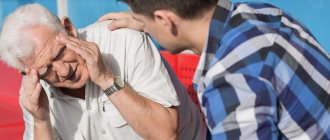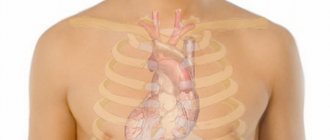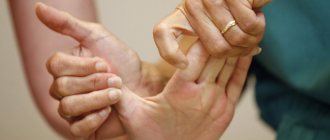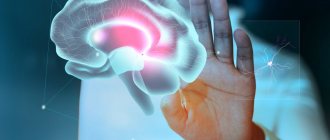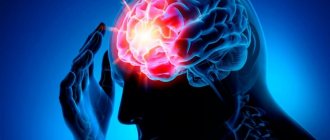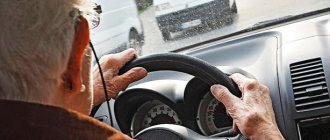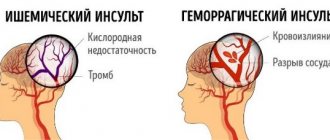Introduction
When you find out that someone you know has had a stroke, it can be a big shock to you. This information provides a brief explanation of what a stroke is, how it affects the person affected, and how a caregiver can help. Its important purpose is to show how you can help people with daily activities such as eating and drinking, washing and dressing.
What is a stroke?
A stroke occurs when a blood vessel in the brain ruptures and blood leaks into the brain, or when a blood vessel becomes blocked or narrowed, reducing the flow of blood to the brain area. Both types of stroke cause damage to brain cells, some of which die.
How does a stroke affect a patient?
Because the brain controls the body, the impact of a stroke is determined by which part of the brain is damaged. A stroke can cause problems with normal body functions, such as eating and swallowing food, or movement and perception, including coordination. Visual perception, hearing, speech and the ability to regulate urination and bowel movements may also be affected. As a caregiver, you should monitor these changes, noting both positive and negative changes.
Stroke patients may feel tired and have difficulty thinking or controlling their emotions. They may be susceptible to depression.
The effects of some types of stroke can last minutes or hours, while recovery from more severe types of stroke can take months or years as other areas of the brain learn to take over the functions of the affected areas. However, sometimes the action remains unchanged.
What is rehabilitation?
Rehabilitation is the process of coping or learning to correct the dysfunction caused by a stroke. With the help of special exercises, stroke patients regain lost abilities or gradually learn new ways to cope with daily activities.
Sometimes professional help may be helpful to help restore speech and language abilities (speech therapist), improve mobility and muscle control (physical therapist), or perform daily tasks (occupational therapist).
How can a caregiver help with rehabilitation?
Sometimes improvement may seem slow.
Maintaining a daily routine can help maintain morale for the stroke patient and their caregiver. The routine should include regular short intervals for the stroke patient to exercise and teach skills.
Patience is required from both the stroke patient and their caregiver. Sometimes it may seem that improvement is happening very slowly. Constant support and praise from the caregiver, even for small accomplishments, helps build trust and maintain morale.
It is very important to provide help when it is needed. The provision of assistance must be balanced between encouraging the patient to gain independence and maintaining confidence in success.
What is a stroke and how does it develop?
Acute cerebrovascular accident (ACVA, stroke, apoplexy) is an acute disease of the brain caused by blockage (ischemia) or rupture (bleeding - hemorrhage) of a vessel supplying part of the brain, or bleeding into the membranes of the brain.
If you tightly tighten the thigh with a tourniquet (as is sometimes necessary to do when a large vessel is injured in order to stop bleeding), necrosis of the muscles of the lower limb begins in about an hour. The brain is much more sensitive to interruptions in blood flow. Those parts of it that are suddenly deprived of the flow of oxygen and nutrients, and this is the essence of a stroke, can die within a few minutes.
There are two types of strokes: hemorrhagic type (vessel rupture and hemorrhage) and ischemic type (vessel blockage). Most often, stroke, both hemorrhagic and ischemic, develops against the background of hypertension, heart disease (atrial fibrillation, defects, paroxysmal tachycardia), heart failure, and cerebral atherosclerosis. Ischemic brain lesions predominate; the ratio of ischemic and hemorrhagic strokes is on average 5:1.
In
ischemic stroke, the cause of blockage is most often pieces that break off from atherosclerotic plaques in large vessels of the neck or thrombotic deposits on the heart valves;
blood clots that form on large plaques in areas of vasoconstriction, vascular spasms for a long time. In a hemorrhagic stroke, a vessel ruptures when there is high blood pressure, since the artery wall is unevenly thinned due to atherosclerosis. High-pressure blood pushes brain tissue apart and fills the resulting cavity, causing a blood tumor or intracerebral hematoma . Or hemorrhage occurs when a saccular formation on the wall of a vessel ruptures, which is called an aneurysm; such hemorrhage most often occurs in the lining of the brain and is called subarachnoid .
Subarachnoid hemorrhage most often occurs before the age of 40 years. A disaster most often occurs after physical exertion (lifting weights, trying to break a stick over the knee), nervous stress, accompanied by a short-term rise in blood pressure.
Helping sick people eat and drink
A stroke patient often has difficulty swallowing after a stroke. They may not be able to feel food or liquid on one side of the mouth or the other. They may have difficulty chewing or producing saliva. There are many ways to make chewing and swallowing food easier.
Choose foods or make them easy to chew, taste, and swallow. Food should not be too hot or cold.
Avoid giving sticky foods that are difficult to swallow
Prepare food so that it smells delicious. This stimulates the production of saliva, which helps swallow food
Avoid giving viscous foods that are difficult to swallow - foods such as milk and dairy products, syrup and viscous fruits such as bananas.
Do not give too dry, hard foods, such as rice, toasted bread, dry biscuits (crackers).
Cooked rice may be sticky or tough. Soften the rice by adding liquid such as soup.
Prepare soft foods or finely chopped hard foods. Soups or juices may be added to solid foods.
Let's drink juice if it is difficult to swallow water.
Thicken liquids with skim milk powder. Diluted liquids may cause suffocation because... they are more difficult to feel.
Give more time for food - 30 or 40 minutes
Give more time for food - 30 or 40 minutes. Ensure that the patient remains seated for 45 to 60 minutes after finishing a meal.
Encourage the stroke patient to eat on the unaffected side of the mouth. Make sure your mouth and throat are clean after every bite of food.
Food remaining in the affected side of the mouth should be removed carefully with a finger if the patient cannot do this himself with the tongue or finger.
Hold the cup or plate level if the patient is eating by himself. If possible, give him cutlery with a wide or elongated handle (fork, spoon).
Symptoms, clinical picture
Precursors of a stroke may appear weeks and even months before an acute cerebrovascular accident. Among the obvious first symptoms of a stroke are:
- dizziness;
- headache;
- darkening of the eyes with sudden movements;
- episodic global memory loss (amnesia);
- sudden short-term disorientation.
The main signs of a major stroke appear several hours before an acute cerebrovascular accident or directly during an attack. Depending on the type of stroke, within a day the patient experiences pronounced symptoms of brain damage:
- drowsiness followed by excitement;
- stunned;
- loss of consciousness;
- increasing sharp headache;
- nausea and vomiting.
Patients are concerned about pain in the eyeballs, a feeling of heat, sweating, increased heartbeat, dry mouth, and convulsive syndrome develops. One of the most common symptoms of a major stroke is coma. It indicates significant and deep damage to brain structures. After treatment and rehabilitation at the Yusupov Hospital, 37% of patients who suffered a stroke live a full life, 25% regain consciousness, but there remain residual disturbances in speech and motor functions, which are also gradually corrected in the rehabilitation clinic.
General cerebral symptoms of a major stroke include:
- Strong headache;
- loss of consciousness;
- dizziness;
- stunned state;
- sopor;
- rarely coma;
- pale skin;
- cardiopalmus;
- nausea;
- vomit;
- convulsive syndrome;
- hyperthermia.
Focal symptoms depend on the location of the pathological focus. When the right hemisphere is damaged, motor and sensory disorders occur in the left half of the body, and vice versa. Among the main symptoms are:
- violation of superficial and deep sensitivity;
- inability to independently flex and straighten limbs;
- drooping corner of the mouth;
- inability to smile;
- impaired speech and swallowing;
- deviation of the tongue towards the affected side;
- memory loss;
- mental disorder;
- decreased visual acuity;
- dry mouth.
Doctors at the Yusupov Hospital pay special attention to the symptoms of a major stroke. The clinical picture, together with the diagnosis, allows us to determine the type of cerebrovascular accident and prescribe appropriate treatment.
How to help sick people get dressed
Stroke often affects the motor system and limits the use of one side of the body. This can make it difficult for a stroke patient to get dressed. There are several things you can do to make dressing the patient easier, and you can help, too.
First, put clothing on the affected arm or leg
Advise the patient to assume a comfortable sitting position before dressing.
Prepare the clothes in the order in which they will be worn, with the items he will wear first on top.
When helping a person put on clothes, make sure they put the clothes on the affected arm or leg first and then on the unaffected arm or leg.
When undressing, the patient should do the opposite, first free the unaffected arm or leg, then quickly remove the clothing from the affected arm or leg.
Invite the patient to wear clothes with simple fittings. For example, clothes with Velcro instead of buttons, elastic waistbands instead of belts or suspenders, and slip-on shoes.
Simple devices can help patients dress themselves
Make sure that the patient does not wear clothes with tight-fitting sleeves, armholes, or tight-waisted pants.
Also make sure that patients do not wear clothing that needs to be pulled over their head.
Helping patients choose clothes that fasten in the front will be helpful.
Simple devices can help stroke patients dress themselves, such as a hook, ring or string attached to a zipper to pull, or a shoe horn.
Make sure you handle the affected side carefully to avoid further damage.
Mechanism of ischemic stroke
Another name for ischemia is cerebral infarction. As a result of a sharp restriction of blood supply, brain tissue dies. This condition often occurs due to rupture of an atherosclerotic plaque, blockage of the lumen of a vessel by an embolus or thrombus.
The cause of atherosclerosis is the deposition of cholesterol in the inner layer of the artery. A blood clot forms due to increased blood viscosity. This condition often occurs against the background of concomitant diabetes mellitus and tumor formations. A cerebral infarction develops due to a sudden cessation of blood flow to the brain tissue. The changes that occur become irreversible 5–8 minutes after the onset of pathological symptoms. In the absence of correct treatment, the affected area increases. Therefore, it is important to seek medical help in time to preserve as much viable tissue as possible.
With the development of ischemic stroke of the left hemisphere, sensory disturbances and motor disorders appear on the right. Damage to the right hemisphere is accompanied by speech disorders. General cerebral symptoms include dizziness, nausea, loss of consciousness, and in rare cases, coma. Specific signs of ischemic stroke are considered to be a decrease or complete loss of sensitivity in the right half of the body, limited or absent movements in the limbs, problems with swallowing, and drooping of the corner of the mouth.
Ischemic stroke is divided into 5 subtypes:
- atherothrombotic – develops slowly due to atherosclerosis of the cerebral arteries;
- cardioembolic – occurs when a cerebral artery is completely or partially blocked and develops rapidly;
- lacunar – occurs due to damage to perforating arteries, develops within several hours;
- hemodynamic – occurs due to a sharp decrease in blood pressure, is sudden, affects all areas of the blood supply;
- microocclusive - develops due to a violation of the coagulation and anticoagulation system.
How to help a sick person wash
As a caregiver, you can make washing easier by preparing the bathroom in advance. Make sure there is enough hot water and that towels, shampoo, soap and dental supplies are easily accessible.
Make sure that the place where the washing procedure will take place is warm and there is no draft. Place a non-slip mat in your bath or shower; Make sure the floor around your bathtub or shower is not slippery.
Make sure the path to the bathroom is clear of any obstacles.
Railings or handrails fixed to the walls can help the patient get in and out of the bath.
Always add hot water to cold water, never the other way around. Check the temperature with your elbow.
First, wash the patient's face and hands. The genital area should be washed last.
Make sure that the shampoo and soap are rinsed off well and that the washed area is well dried.
The patient can sit in a chair while he or she washes in the bath or shower; The chair should have rubber tips on the legs or be placed on a towel to prevent slipping.
A portable shower is most convenient for washing your hair and partial bathing. A shower with a long hose is easier to use.
Use as little shampoo as possible for minimal rinsing.
Please note that washing a patient in a lying position is more convenient and safer than moving him in the bathtub. If you decide this is the best option, make sure you wash and dry each body part in turn; keep only the part of the body being washed uncovered.
Assisting patients in brushing their teeth should be careful every morning, evening and after meals. Never force a patient to open their mouth. Use a toothbrush and very little toothpaste to avoid choking.
When helping a patient shave, it should be noted that an electric razor is safer than a regular razor and is recommended to be used.
Prevention
Prevention should be aimed at identifying and correcting the main risk factors.
Atherosclerosis
It is necessary to constantly monitor the level of blood lipids - total cholesterol, LDL, HDL, VLDL, TG, CA. If you are prone to high cholesterol, you must follow the prescribed diet. If following a diet does not provide the desired reduction in cholesterol levels, statins are prescribed - drugs that lower blood lipid levels.
Arterial hypertension
If a diagnosis of “Arterial hypertension” is made, you should take all prescribed medications without skipping, even with normal blood pressure values. You need to keep a blood pressure diary, where you should enter your blood pressure and pulse readings. If blood pressure is unstable, there is a tendency to crises, the diary should be filled out 2 times a day - morning and evening. Such a diary will help the doctor choose the optimal therapy.
Rhythm disorders
Rhythm disturbances can be the result of many heart diseases, incl. myocardial infarction. If there are rhythm disturbances in the atria, most often atrial fibrillation, a person may not feel anything; these disturbances can be detected by taking an ECG. Atrial fibrillation causes the formation of thrombi - blood clots that can cause not only strokes, but also heart attacks of other internal organs.
If atrial fibrillation is detected, anticoagulants are prescribed - drugs that prevent thrombus formation. Taking anticoagulants increases the risk of bleeding. Anticoagulants should not be interrupted, and the drug or dose should not be changed without the doctor's permission.
When PMI or stroke occurs in people under 45 years of age without cardiovascular disease, rarer causes should be excluded.
Stroke is easier to prevent than to treat its consequences. In severe cases, patients remain bedridden despite all the efforts of doctors and relatives. In other cases, rehabilitation can take months or years. The network of boarding houses has created special programs for recovery after a stroke in boarding houses, which are aimed at speedy recovery under the supervision of specialists.
Additional Information
Impact on relationships
A stroke patient may be dependent on a caregiver, at least initially and perhaps permanently. Caregivers may perform activities previously performed by those who are ill, such as keeping track of finances, driving, or shopping and preparing meals.
It is important that family and friends help cope with the burden of worries. The caregiver must select and determine their assistance in carrying out exercises/activities with the patient or being with the patient while the caregiver is absent.
Practical aids
Home appliances make life easier for the patient to continue leading a normal life. These include special equipment such as ladders to get up and down, installing a shower instead of using a bathtub, or attaching handles to the bathtub to make it easier to get in and out of the bathtub.
Mobility assistance such as a wheelchair may be needed.
Specially equipped devices for one-handed use can make daily tasks possible - peeling vegetables, dentures or nails, opening cans or a stick with a hook to help with dressing. A floating bath thermometer will prevent accidental scalding.
Sometimes a new way of performing a familiar task may be needed to overcome a physical disability. For example, cooking vegetables in a pan of water may require careful rethinking, step by step, as it can be done while sitting or with one hand.
Psychological rehabilitation of patients with consequences of stroke
Medical psychologist, State Budgetary Institution Scientific and Practical Center of MSR named after L.I. Shvetsova
Rokitskaya Inna Borisovna
- Consequences of stroke and rehabilitation methods.
The consequences of a cerebral stroke are always devastating. Post-stroke patients experience medical, social, psychological and legal problems. Consequently, there is a need for rehabilitation of post-stroke patients, which becomes an urgent medical and social task of society as a whole. Moreover, the rehabilitation in question, first of all, should have a social orientation.
Stroke has a negative psychosocial impact on the patient, dramatically changing lifestyle and normal control over the environment.
What can threaten a person after a stroke:
- limitation or complete loss of physical activity;
- speech and mental disorders, loss of cognitive abilities;
- memory loss, temporary or complete amnesia;
- improper coordination of movements;
- impaired fine motor skills - for example, a person has forgotten how to write;
- loss of vision or weakening of it;
- inflammation, decreased immune system and, as a result, infectious lesions.
The severity of the consequences of diseases of the nervous system has shown the need for long-term, targeted restoration of impaired functions, and if full recovery is not possible, adaptation to the defect and ensuring the highest possible level of social and psychological adaptation of patients. Complexity, phasing, continuity and individualization of therapeutic effects are the main conditions for full rehabilitation and include:
Biological methods of influence:
- drug therapy
- physical therapy
- mechanotherapy
- physiotherapy
- occupational therapy
Psychosocial methods of influence:
- occupational therapy
- employment therapy
- psychological assistance
- Factors complicating rehabilitation.
Factors that complicate rehabilitation, along with somatic diseases and complications, are cognitive impairment, emotional disorders, and pathological personality reactions to the disease.
At the stage of early rehabilitation, the patient’s psychological adaptation to the changed image of “I” and acceptance of himself as he is after the disease are difficult; Difficulties arise in accepting impaired motor and cognitive functions and self-acceptance.
Awareness of the labor intensity and duration of the recovery period is accompanied by:
- overestimation of the severity of the condition and/or underestimation of one’s own capabilities;
- hypochondriacal and depressive reactions to illness,
- decreased self-esteem, which makes it difficult for the patient to be included in the rehabilitation process.
- decreased ability to self-care and regain independence in everyday life
- decreased quality of life.
The effectiveness of rehabilitation measures directly depends on the emotional state of the patient . The study of the psychological characteristics of patients after a stroke allows us to identify the degree of cognitive impairment and resources for restoring impaired functions; identify emotional and personal problems that impede adaptation; identify possible psychotherapeutic targets for the development of psychological assistance programs.
After suffering a stroke during the first year, the incidence of depression varies from 35% in the acute period to 31.4% at the end of the first year, reaching a peak of 44.7% in the early recovery period.
Post-stroke depression occupies a special place in the clinical picture of stroke. It is a universal response of the patient’s psyche to various aspects of the development of the disease:
- fact of illness
- organic brain damage and numerous symptoms of such damage
- social consequences of stroke.
A depressive state adversely affects the implementation of rehabilitation measures: recovery is slower, the quality of life deteriorates and the frequency of recurrent strokes, heart attacks, and cognitive impairment increases. The above threats make it important to early recognize depressive pathology for the speedy implementation of clinical and psychological correction aimed at restoring impaired functions, social contacts and returning the patient to society. Depressive states in the post-stroke period differ in the timing of their onset: in some cases they play the role of factors and precede the development of stroke, in others they develop after a stroke as its consequence and represent post-stroke depression itself. To diagnose a depressive episode, there are main and additional symptoms. Main symptoms :
- depressed mood for most of the day, regardless of the situation;
- weakening to the complete loss of interests and the ability to experience pleasure in activities that previously evoked positive emotions;
- decreased activity, increased fatigue and lethargy;
- increased depression in the morning;
- noticeable (objectively observable) psychomotor retardation or agitation (motor agitation);
- loss of body weight (by 5% or more during the last month);
Additional symptoms:
- decreased concentration;
- decreased self-esteem and feelings of self-doubt;
- guilt, self-deprecation;
- a gloomy, pessimistic vision of the future;
- thoughts of death, suicide or self-harm;
- sleep disturbance (early awakening);
- decreased appetite.
Since the cause of reactive depression is a psychotraumatic situation, the main help for these conditions should be aimed at eliminating/correcting the psychotraumatic factor, searching for resources aimed at improving adaptation, and changing attitudes towards the current situation. Psychotherapy plays a leading role in the treatment of such patients , while drug intervention, as a rule, is of a secondary, auxiliary nature and is carried out in cases where the use of psychotherapeutic influence and social rehabilitation measures is ineffective or severe depression occurs.
- Psychological rehabilitation.
Psychological rehabilitation is defined by us as a system of multicomponent psychological influences aimed, on the one hand, at the patient, in order to achieve psychological adaptation of the patient after a stroke; on the other hand, aimed at the patient’s microsociety, with the goal of creating a psychotherapeutic environment in his environment.
Psychological rehabilitation, at different stages of rehabilitation, is aimed at developing psychological rehabilitation attitudes in the patient:
- readiness for treatment
- cooperation with staff
- activity in treatment
- healthy lifestyle settings
- self-acceptance and self-help
- accepting a new social role
- accepting a new meaning in life.
Principles of psychological rehabilitation:
- Identification of personality problems at each stage of rehabilitation and their correction.
- Stage-by-stage psychological rehabilitation.
- Informing (awareness) of the patient and family members about the need to fulfill the psychological conditions of rehabilitation that contribute to effective treatment.
- Orienting the patient towards the formation of healthy lifestyle attitudes as a condition for psychological prevention of recurrent stroke.
- Taking into account the individual characteristics of the patient (somatic, motor, cognitive, emotional, personal) when creating an individual program of psychological rehabilitation.
- Continuity of psychological influences at different stages of psychological rehabilitation (inpatient and outpatient).
- Routing the patient, as well as his family members, to carry out prescriptions and rehabilitation recommendations of specialists after discharge from the hospital, at home.
- Stages of psychological rehabilitation.
At the first stage, a patient with motor and cognitive impairments undergoes individual psychological correction aimed at:
- to restore the integrity of the “I”
- to identify internal resources, preserved aspects of the body and personality,
- formation of readiness for treatment and cooperation with staff
- self-help
- reducing sensory, emotional and social deprivation of patients
- providing emotional support.
Individual psychological correction using psychotherapy contributes to:
- acceptance and awareness of the disease, acceptance of one’s new physical and mental appearance
- taking responsibility for your recovery and restoration of impaired functions.
The first stage of psychological rehabilitation is the most labor-intensive. Some patients go through it in 3-4 months, while for others the stage may drag on for a longer period (a year or more), depending on the severity of the consequences of the stroke.
The clinical criterion of adaptation at the first stage is the restoration of self-service:
- achieving physical independence in moving
- in eating
- when going to the toilet
- walking independently for a short distance (in the ward, around the apartment)
- partial dependence
The psychological criterion of adaptation at the first stage is the achievement of a positive self-attitude:
- physical and cognitive self-acceptance
- formation of readiness for treatment, cooperation with specialists
- availability of social support (relatives, loved ones, social worker).
At the second stage of psychological rehabilitation, the leading problem is problems of interpersonal relationships in the family and in the immediate environment, associated with:
- with loss and change of social roles
- lack of social support.
The task of the second stage of psychological rehabilitation is the correction of interpersonal relationships.
It is important to teach the patient to reassess values, try to switch attention from the disease to other problems, in particular, to the interests of family and friends, friends, and the team. The work is carried out not only with the patient, but also with his family members.
An optimal psychological environment at home promotes rapid recovery. Patient, gentle treatment allows patients to adapt to their illness, avoid severe depressive conditions, helps them enjoy life, and make plans for the future taking into account their new condition. When communicating with the patient and his family members, it is necessary to emphasize that the disease worsens the quality of life, but is not currently a threat to it.
The clinical criterion of adaptation is the expansion of self-care capabilities:
- the patient goes outside independently and can prepare food
- necessary assistance in taking a bath, paying bills, paperwork
- buying medicines, groceries
The psychological criterion of adaptation is the patient’s acceptance of the changed social status:
- readiness for interpersonal communications
- restoration of cognitive functions
- restoration of communicative speech function
- low levels of depression and anxiety
- availability of social support (relatives, loved ones, social worker).
At the third stage, the leading psychological problem among patients was the problem of forming new life values and the meaning of life.
For many patients, the consequences of the disease led to a significant decrease in performance due to motor and cognitive impairment; there was a need to complete work activity or continue it under changed conditions. Reduced labor opportunities and obstacles in the implementation of professional skills often led to anxious, asthenic-depressive reactions to the disease and its consequences. The psychological assistance program at the third stage of psychological rehabilitation is aimed at stabilizing the system of individual relationships; formation of a new concept of life. Psychological correction is carried out aimed at correcting value orientations; training in psychological skills of autogenic training, meditation; developing new life goals; mastering techniques for coping with stress
The clinical criterion of adaptation at the third stage is:
- restoration of physical independence
- cognitive independence (restoration of cognitive and regulatory functions)
- return to feasible work activity
The psychological criterion of adaptation is:
- formation of healthy lifestyle attitudes as a conscious prevention of relapse
- diet, blood pressure control, regular intake of necessary medications
- respect for your body and health care
- awareness of the paramount value of health,
- realization of a new meaning in life.
Psychological assistance at each stage of psychological rehabilitation is aimed at correcting the individual’s relationship: to himself, to the disease and treatment, to society, and is aimed at adapting patients after a stroke to changed living conditions.
Work with relatives is aimed at information and family counseling. The request for family counseling may come from the patient or from his relative.
Relatives are provided with information about the characteristics of the patient’s cognitive impairment, emotional state, and personality reactions to the disease; about the necessary assistance to the patient from relatives to restore impaired motor and cognitive functions, depending on the severity of the patient’s clinical disorders.
- The following recommendations have been developed for relatives of stroke patients:
- It is necessary to establish a daily routine while maintaining the patient’s main activities
- Ensure the safety of the patient: check the security of the locks on doors and windows, remove all cutting and piercing objects and dangerous electrical appliances.
- Use the principle of clarity and demonstration when communicating with the patient. It is important to explain something and at the same time clearly show it. You can use pictures and elements of nonverbal behavior.
- It is necessary to encourage all independent actions of the patient - dressing, eating, putting on shoes. Try to encourage the patient even for minor changes.
- Try to activate the patient from the first days, if there are no contraindications for this.
- Pay attention to your needs, leave time for yourself, for hobbies.
- When leaving, be sure to show patience, mercy, and kindness. Show concern and understanding.
Thus, psychological rehabilitation is built taking into account the individual characteristics and needs of patients. This is a comprehensive psychological assistance aimed at regulating the mental state during hospitalization and optimizing further functioning in the family and society.
Reducing the risk of subsequent strokes
Controlling blood pressure is very important.
A patient who has already had a stroke has a chance of having a subsequent one. However, you can reduce your risk of another stroke through lifestyle changes, diets and medications. Controlling your blood pressure is very important.
Professional information and support from a doctor or nurse are an important source of advice. Don't be afraid to ask them to repeat information and explain what you don't understand.
You can have regular social meetings, perhaps every month, with other stroke caregivers. This can be a good way to gain support as well as ideas regarding the stroke patient's adjustment to life.
Diagnostics
Major stroke is a condition requiring urgent diagnosis and treatment. For this, the Yusupov Hospital uses the following methods:
- Collection of complaints and medical history. The doctor finds out the time of onset of pathological symptoms, their severity and speed of spread. It is necessary to establish predisposing factors.
- Measurement of blood pressure and heart rate. These are indicators by which the severity of the patient’s condition is assessed.
- MRI. Allows visualization of cerebral tissue. Today, tomography is considered the most informative method for diagnosing acute cerebrovascular accident.
- EEG. Evaluates brain activity. In the affected area, the waves received will be below normal.
- Doppler ultrasound of the vessels of the head and neck. It is carried out to determine the nature of blood flow in the brain area.
- Clinical and biochemical blood test. Prescribed to detect cholesterol concentrations. The standard of research includes a lipid profile.
The listed diagnostic methods can be expanded depending on the individual characteristics of the disease. The Yusupov Hospital uses modern medical equipment for examinations. Thanks to this, it is possible to quickly and accurately determine the pathological focus. Based on the data obtained, neurologists select a treatment and rehabilitation program for each patient. This approach allows you to reduce the length of hospital stay and minimize the risk of complications and recurrent stroke.
Make an appointment
First aid for stroke
When a person has a stroke, there are several external signs that are important for everyone to know:
- the corners of the lips are located on different lines due to difficulty contracting the facial muscles,
- arms are not raised symmetrically,
- pronouncing words is difficult.
Signs of ischemic stroke appear even before changes in brain tissue develop. Their name is the initial manifestations of insufficiency of blood supply to the brain (IPNCM).
NPNCM can be identified at home using the L.S. questionnaire. Manvelova. One positive answer (+) is equal to one point. To confirm the diagnosis, you should answer yes at least twice to the questions about the presence of the following sensations at least once a week or constantly during the last three months:
- headache without clear localization, often associated with fatigue and changes in weather;
- dizziness, increasing with changes in body position in space;
- noise in the head is constant or transient;
- memory impairment, which extends to current events; logical memory, as a rule, does not suffer;
- sleep and/or performance disorders.
Two or more points indicate the prerequisites for the rapid development of a stroke and the need to take preventive measures.
After identifying signs of a stroke, you must call an ambulance
, the patient should take a horizontal position, head slightly higher than the body, remove dentures, eye lenses and glasses. In the absence of consciousness, open the patient’s mouth slightly, tilting his head slightly to one side, and monitor his breathing.
Before the ambulance arrives, prepare a list of medications the patient is taking, information about drug intolerance, and prepare documents for hospitalization. Assistance to the patient in a hospital setting will be provided in accordance with the standards of medical care for patients with stroke, approved by Order of the Ministry of Health and Social Development of the Russian Federation dated August 1, 2007 N 513.

